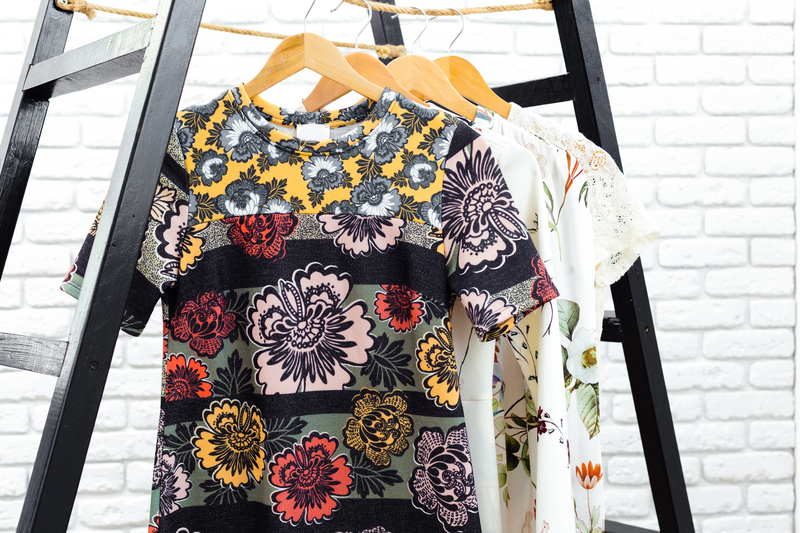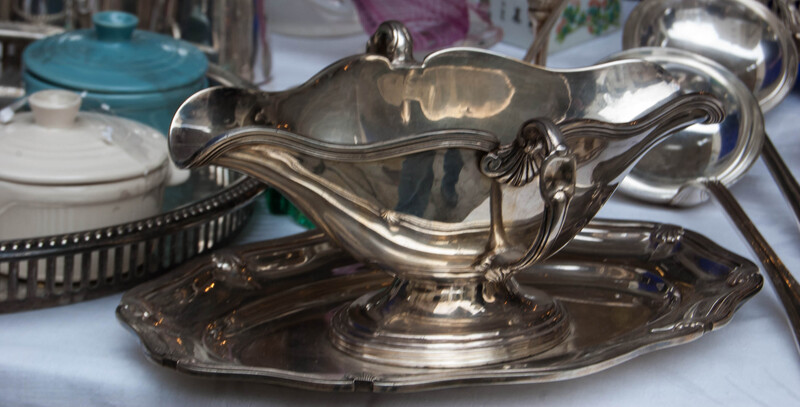Fashioned from Forgotten: Upcycling Old Clothes and Linens
Embrace the charm of the past while protecting the planet--upcycling old clothes and linens is more than just a creative hobby. It is a meaningful and fashionable approach to mindful living.
What Is Upcycling?
Upcycling, often described as creating something new and valuable from items destined for the landfill, is revolutionizing the fashion and home decor industries. Instead of discarding worn-out garments or faded linens, you can reinvent them into trendy outfits, practical accessories, or unique interior decorations. By upcycling old clothes and linens, we can not only reduce waste but also curate our personal styles and add character to our living spaces.
Why Upcycle? The Environmental Impact
The fashion industry is responsible for a significant amount of global pollution--second only to the oil industry. Each year, millions of tons of textiles end up in landfills, contributing to methane emissions and groundwater contamination. Upcycling plays a crucial role in diverting this waste, reshaping the way we view 'old' fabrics, and helping us lead more eco-conscious lives.
- Reduces landfill waste by giving textiles new life
- Minimizes the demand for new resources required for producing new fabric
- Decreases water and energy usage in the manufacturing of virgin textiles
- Promotes sustainable fashion and home decor practices

How to Start Upcycling Clothes and Linens
Embarking on an upcycling journey doesn't require expert sewing skills or expensive tools. Anyone can dive into upcycling old clothes and linens with just a few basics. Here's how to get started:
1. Gather Your Forgotten Textiles
Search your closet, attic, or linen cabinet for items that are faded, stained, torn, or simply out of style. Old cotton shirts, worn jeans, linens with small holes, or even outdated curtains are perfect candidates for upcycling.
2. Find Inspiration
Explore DIY upcycling blogs, social media channels like Instagram and Pinterest, or YouTube tutorials. Search for terms like "fashioned from forgotten", "creative clothing upcycle", or "linen repurposing ideas" to spark your creativity.
3. Plan Your Project
Consider what you want to make, based on your textiles and skill level. Sketch your idea or jot down notes. Will you turn that vintage dress into a trendy tote bag? Or transform faded pillowcases into patchwork napkins?
4. Gather Supplies and Tools
- Basic sewing kit: needles, thread, pins, scissors, or a sewing machine
- Measuring tape, fabric chalk, and patterns
- Optional: buttons, zippers, patches, fabric glue, iron-on transfers, dyes
Popular Upcycling Ideas for Clothes and Linens
The possibilities for upcycling are nearly endless. Here are some creative and practical ways to give new life to old fabrics:
For Old Clothes
- T-shirt to Tote Bag: Cut and sew the bottom closed, add handles, and you have a unique shopping bag.
- Jeans to Apron: Repurpose old denim jeans into stylish and sturdy aprons perfect for cooking or gardening.
- Shirt to Skirt: Transform oversized button-down shirts into fun, flirty skirts.
- Sweater Mittens: Use felted wool sweaters to craft cozy mittens for colder months.
- Patches and Embroidery: Cover stains and tears with creative patches or expressive embroidery.
- Quilted Blankets: Collect scraps from various garments for a special memory quilt.
For Old Linens
- Pillowcase Dresses: Old pillowcases can become adorable children's dresses with a few alterations.
- Tea Towels: Worn bedsheets or tablecloths can be cut into stylish, reusable kitchen towels.
- Patchwork Table Runners: Create a charming table runner or placemats from different linen scraps.
- Reusable Produce Bags: Lightweight linens are ideal for making eco-friendly grocery bags.
- Lavender Sachets: Small scrap pieces can be sewn and filled with dried lavender for fragrant drawer inserts.
- Fabric Gift Wrap: Use large squares of lovely fabric as reusable, zero-waste gift wrap (inspired by Japanese furoshiki).
Tips for Successful Upcycling
- Start small: Begin with simple projects to gain confidence and learn new techniques.
- Mix and match: Don't be afraid to combine fabrics, colors, and textures for one-of-a-kind creations.
- Wash and iron: Always start with clean, smooth fabrics for best results.
- Pre-plan your cuts: Think through each cut to maximize the usable fabric and minimize waste.
- Embrace imperfections: Small flaws can add charm--highlight them with decorative elements.
Transforming Textile History: The Story in Every Stitch
Every upcycled creation holds a story. A patchwork quilt stitched from childhood pajamas, a handbag reconstructed from a grandparent's tablecloth, or a pillow made from a wedding dress--each embodies both memory and creativity. As you upcycle old clothes and linens, you also preserve personal and family histories, enriching your home and wardrobe with items that matter.
The Rise of Upcycled Fashion Brands
Upcycling isn't confined to home projects; it is reshaping the commercial fashion landscape. Many new and established brands are embracing zero-waste design principles. From luxury labels repurposing vintage textiles to indie makers specializing in "fashioned from forgotten" clothing, upcycling is gaining popularity and mainstream appeal.
- Patagonia: Famous for its Worn Wear program, Patagonia repairs and resells vintage garments.
- Marine Serre: This Parisian label upcycles deadstock linens and garments into couture gowns and separates.
- Re/Done: Specializes in deconstructing vintage Levi's jeans for contemporary fits.
- Beyond Retro: Curates and remakes vintage fabric into trendy new pieces in their London and Stockholm studios.
Trends Fueling the Movement
- Eco-Conscious Consumerism: Shoppers are increasingly prioritizing ethical and sustainable purchases.
- Unique Style Preferences: People want pieces that are one-of-a-kind, not mass-produced.
- DIY Spirit: Crafting, sewing, and making are trending social media topics.
- Minimalism and Decluttering: Transforming underused items aligns with the movement toward mindful consumption.
Essential Techniques and Tutorials
Simple No-Sew Ideas
No sewing machine? No problem! *Fashioned from forgotten* upcycling projects can be as simple as:
- Tying T-shirts into crop tops or halter tanks
- Braiding fabric strips for headbands or bracelets
- Knotting pillowcases to form decorative throw pillows
- Using fabric glue to attach patches or appliques
Sewing and Construction Tips
- Always reinforce seams on stress points--double-stitch where needed.
- Consider using patterns or templates for precision when shaping your new items.
- Keep a stash of rescued buttons, zippers, and trims--they add style and reduce costs.
- Practice basic techniques like hemming, gathering, and creating darts to refine fit and shape.
Safety, Sanitation, and Quality
Whenever you upcycle old linens or thrifted clothing, cleanliness is key. Always wash and sanitize fabrics before starting your project to eliminate dust, allergens, or bacteria. Opt for hypoallergenic detergents and air-drying when possible to preserve fabric integrity.
Inspiring Success Stories
Many individuals and small businesses are championing the art of fashioned from forgotten upcycling. For example:
- The Patchwork Community: Quilting groups around the world share blocks from upcycled garments, creating cherished blankets for people in need.
- Eco-conscious Etsy Sellers: Artisans offer patchwork jackets, tote bags, and children's clothes, transforming discarded linens into hot items.
- Family Keepsakes: Parents have made quilts from baby clothes, preserving precious memories and reducing clutter.
Financial Perks: Save Money & Earn
Upcycling isn't just sustainable; it's budget-friendly. Transforming old clothes and linens can:
- Stretch your wardrobe without shopping for new items.
- Provide inexpensive, handmade gifts for loved ones.
- Offer a potential revenue stream via local markets, online shops, or commissions.
Many upcyclers are now selling their creations, bringing personalized, eco-conscious products into others' homes while supplementing their income.
Challenges and How to Overcome Them
- Fabric Wear: Reinforce or double-layer thin areas, or use worn spots artistically as part of the design.
- Color Fading: Dye old linens or combine fabrics creatively to mask inconsistencies.
- Skill Limitations: Start with simple, no-sew projects while you learn, or partner up with a friend for joint projects.
- Lack of Time: Choose quick upcycles that offer instant gratification, like pillowcase bags or fabric coasters.
The Bigger Picture: Upcycling as a Lifestyle
Upcycling is about more than just crafting--it's a mindset. When you approach possessions as potential materials for future projects, you reduce unnecessary consumption and foster a more sustainable lifestyle. Incorporating upcycling into daily life:
- Teaches resourcefulness and creative problem-solving
- Encourages community-building through workshops, swaps, and upcycling groups
- Passes eco-friendly habits and values to future generations

Getting Involved: Community Upcycling Events and Support
Look for local upcycling classes, sewing circles, or swap meets. These gatherings can provide instructional support, fresh inspiration, and a sense of camaraderie. Some cities host "fix-it clinics," where volunteers help repair or repurpose clothing and textiles free of charge. Joining online forums or participating in global challenges--such as Me-Made May or Fashion Revolution Week--can broaden your creativity and connect you with like-minded makers worldwide.
Conclusion: The Fashioned from Forgotten Movement
Upcycling old clothes and linens--fashioned from the forgotten--offers powerful ways to express your personal style, safeguard the environment, honor family history, and even build new economic opportunities. This creative, mindful approach turns yesterday's castoffs into tomorrow's treasures, proving that with a little imagination, every fabric has potential for rebirth.
So open those overstuffed drawers and trunks--your journey into the world of upcycled textiles awaits. Do more than simply recycle; reimagine, reinvent, and relove your fabrics. Because sometimes, the best fashion--and decor--is truly fashioned from forgotten.
